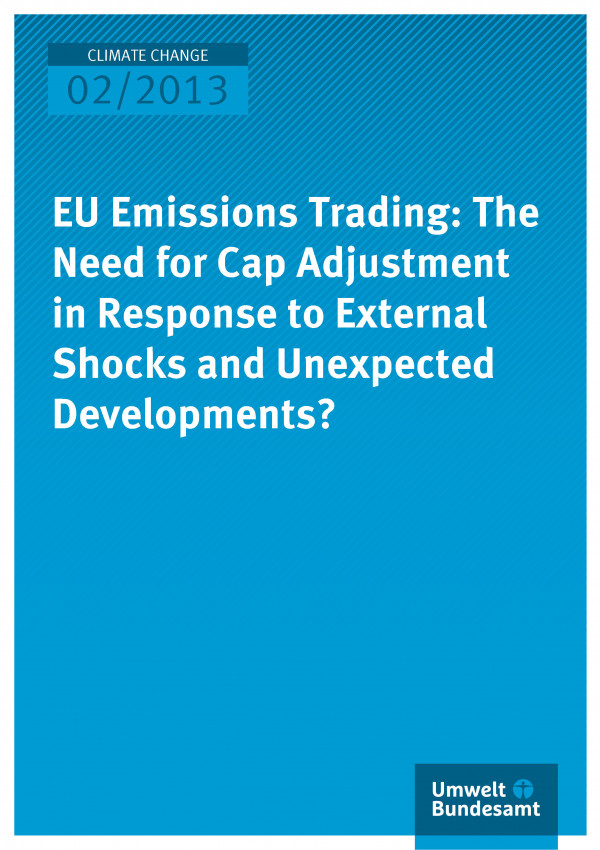The effectiveness of an emissions trading system in terms of reducing greenhouse gas emissions is mainly due to the magnitude of the specified emission cap. Assuming sufficient control, a quantitative emission target defined in such a way is quasi automatically achieved by the limited allocation of emission allowances. In functioning markets, this coincides with a somewhat higher allowance price as a scarcity signal for emissions. The cap setting in emissions trading is therefore a central political control mechanism. In order to evaluate the effectiveness of the European Emissions Trading System (EU ETS), the system boundaries in terms of geography, sectors and time and the rules for internationally flexible mechanisms and banking should be observed. EU ETS is a partial system that has so far covered about half of the emissions.

Climate | Energy
EU Emissions Trading: The Need for Cap Adjustment in Response to External Shocks and Unexpected Developments?
Series
Climate Change | 02/2013
Number of pages
54
Year of publication
Author(s)
Jochen Diekmann
Language
English
Other languages
Project No. (FKZ)
3711 41 504
Publisher
Umweltbundesamt
File size
3102 KB
Price
0,00 €
Print version
not available
rated as helpful
185

